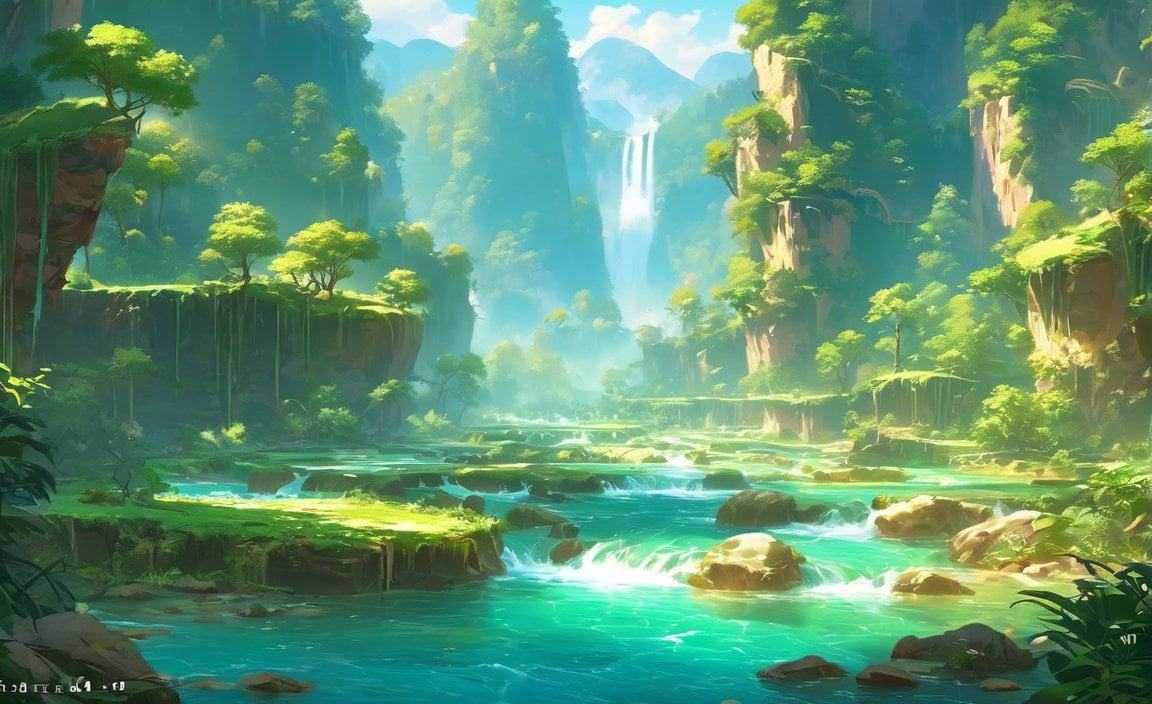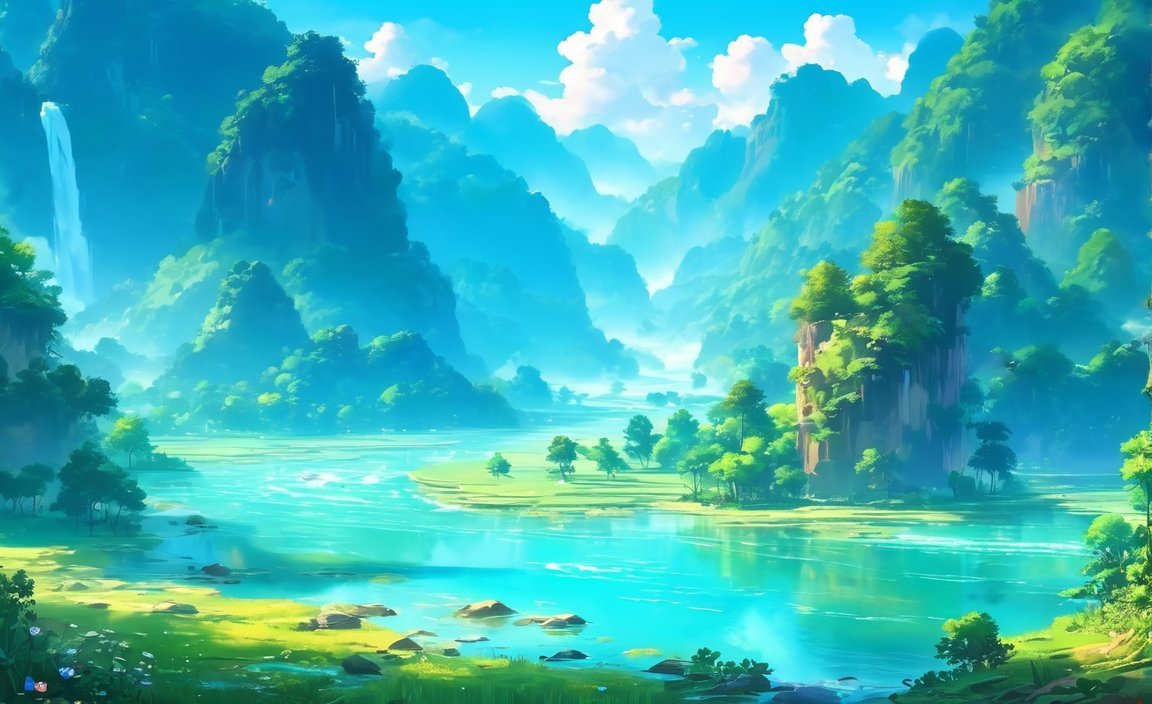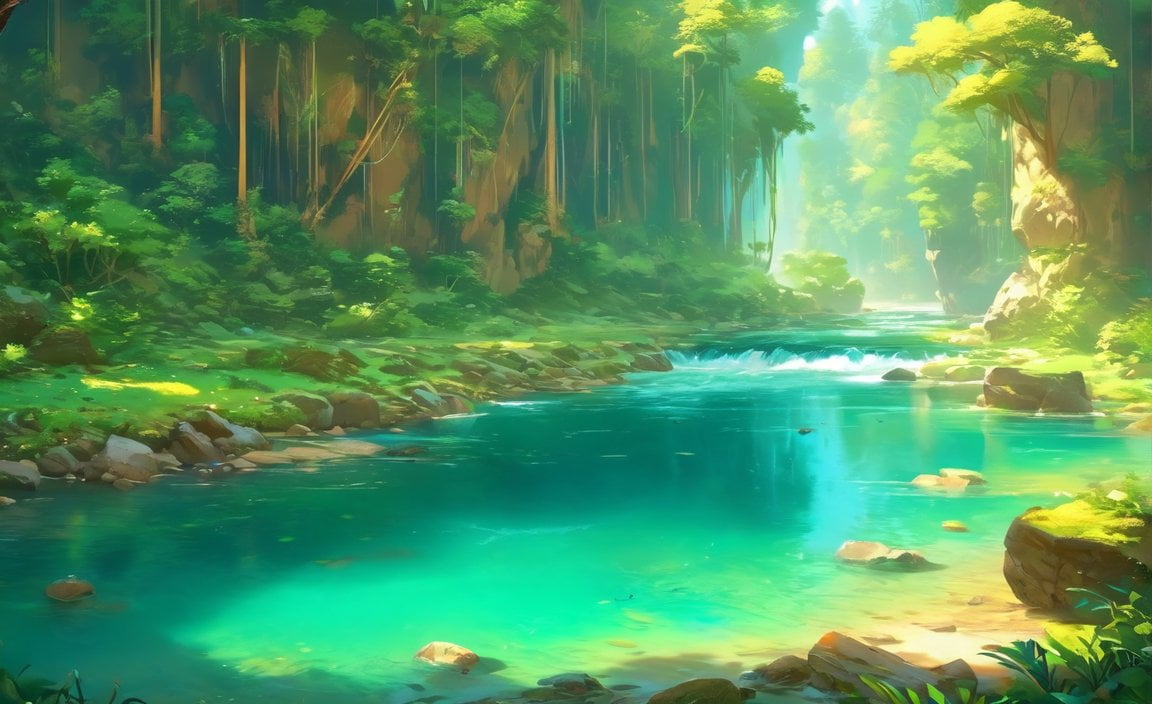Discover the extraordinary world of rivers with “Unveiling Nature’s Wonders: 10 Fascinating River Facts.” In this article, we will delve into the enchanting realm of water ecosystems and uncover some captivating insights about these vital lifelines of our planet. From astonishing formations to remarkable biodiversity and awe-inspiring historical significance, join us as we explore ten intriguing facts that will ignite your curiosity and deepen your appreciation for the wonders of nature.
Key Takeaways:
- Water from rivers ultimately flows into the ocean or sea.
- Rivers provide a diverse habitat for numerous animal species.
- Heavy rainfall can cause rivers to flood.
- Rivers have a source where they begin and a mouth where they end.
- The Amazon River holds the titles of being the longest and most full-flowing river in the world.
- The world’s shortest river measures only 118 feet (36 meters) in length.
- Saudi Arabia is the only modern state without any permanent rivers.
- Rivers serve essential purposes such as providing water, food, transportation, and energy sources.
10 Interesting Facts About Rivers

Fact 1: Water Flows from Rivers to the Ocean and Sea
Rivers are the lifelines of our planet, playing a crucial role in the water cycle. They gather water from various sources, such as rain, melting snow or ice, and underground springs, and carry it downstream to the ocean or sea. This process ensures a continuous supply of freshwater to marine ecosystems, supporting various forms of marine life.
Fact 2: Rivers are Biodiversity Hotspots
Rivers are teeming with life, hosting a multitude of species that rely on these water bodies for survival. From tiny microorganisms to large fish and mammals, rivers provide a diverse and rich habitat for countless creatures. Their flowing waters create a unique environment that supports a variety of plants, insects, amphibians, reptiles, birds, and mammals, making rivers important hubs of biodiversity.
Fact 3: Rivers Can Flood Due to Heavy Rainfall
Rivers have a dynamic nature that can sometimes result in flooding, especially during periods of heavy rainfall. The excess water causes rivers to overflow their banks, inundating nearby areas and altering the landscape. While flooding can have devastating impacts on human settlements, it also plays a vital role in distributing sediments, replenishing nutrients in floodplains, and supporting the growth of vegetation.
Fact 4: The Source and Mouth of a River
The journey of a river begins at its source, which is typically a spring, glacier, or even a lake. From there, it meanders through various landscapes, carving its way through mountains, valleys, and plains. The place where a river ends and meets another larger body of water, such as a sea or ocean, is known as its mouth. The source and mouth of a river mark the beginning and end of its remarkable journey.
Fact 5: The Amazon: The Longest and Most Full-Flowing River
The mighty Amazon River in South America holds two impressive records. It is not only the longest river in the world, stretching over 6,400 kilometers (4,000 miles), but it is also the most full-flowing river, discharging more water than any other river on Earth. Its vast basin covers around 7 million square kilometers (2.7 million square miles), sustaining a remarkable array of wildlife and ecosystems.
Fact 6: The World’s Shortest River
Contrasting the grandeur of the Amazon, the world’s shortest river is a petite marvel. The Roe River in Montana, USA, holds this title, measuring merely 118 feet (36 meters) in length. While it may be short, its significance lies in its crystal clear water, which originates from an underground spring. Despite its brevity, the Roe River epitomizes the beauty and diversity found in rivers, regardless of their size.
Fact 7: Saudi Arabia: The Modern State Sans Permanent Rivers
In a world dotted with rivers, Saudi Arabia stands as a unique exception. It is the only modern state without any permanent rivers within its territory. This dearth of rivers has shaped the country’s ecology, necessitating innovative solutions for water management and conservation. However, Saudi Arabia boasts other mesmerizing natural wonders, including stunning deserts and ancient archaeological sites.
Fact 8: Rivers: The Lifelines of Civilization
Since ancient times, rivers have been crucial for human settlements and the development of civilizations. Rivers provide a lifeline for humanity, serving as sources of freshwater for drinking, irrigation, and sanitation. Additionally, they have been vital for transportation, facilitating trade and communication between different regions. Even today, many cities and towns around the world thrive along the banks of rivers, emphasizing their significance to our daily lives.
Fact 9: Rivers: A Renewable Energy Source
Apart from water and transportation, rivers are capable of harnessing clean and renewable energy. Hydropower plants utilize the flow of rivers to generate electricity, providing a sustainable alternative to fossil fuel-based power sources. This form of renewable energy minimizes greenhouse gas emissions and plays a vital role in combating climate change, while also contributing to local economies and energy security.
Fact 10: Rivers: The Rhythm of Nature
Rivers possess a mesmerizing rhythm, constantly changing and shaping the landscapes they traverse. They sculpt valleys, carve canyons, and deposit sediments, which contribute to the formation of fertile soils and diverse ecosystems. Rivers are the backbone of our planet’s hydrological cycle, ensuring the continuous circulation of water and supporting life in all its magnificent forms.
Whether by their immense size, captivating biodiversity, or cultural significance, rivers are awe-inspiring features that deserve our attention and appreciation. Understanding these fascinating facts about rivers serves as a window into the wonders of our natural world and strengthens our connection to these vital lifelines. So, delve into the depths of knowledge about rivers, and unlock nature’s extraordinary secrets.
Here are some interesting facts about the River Severn that you may not know.
Did you know that the River Severn is the longest river in the United Kingdom? Click here to discover more captivating facts about the river!
The tropical rainforest biome is home to an incredible array of plant and animal species. Learn 10 fascinating facts about this unique and diverse ecosystem by clicking here.
Rivers are Home to a Rich Diversity of Plants and Animals, Making Them Important Ecosystems.

Rivers are more than just bodies of water flowing through landscapes. They are teeming with life and serve as vital ecosystems that support a rich diversity of plants and animals. From microscopic organisms to majestic creatures, rivers provide habitats and resources essential for their survival. Let’s explore ten fascinating facts about rivers and the incredible biodiversity they harbor.
1. Rivers: Lifelines of Biodiversity
Rivers are home to a rich diversity of plants and animals, making them important ecosystems. They provide a unique environment where a wide array of species can thrive. From vibrant fish species to lush plant communities, rivers foster intricate webs of life, making them crucial for the overall health and balance of ecosystems.
2. Biodiversity Hotspots
Rivers are biodiversity hotspots, hosting an astonishing variety of species. The flowing water and diverse habitats along the riverbanks create a favorable environment for plant and animal life. Various species, including birds, mammals, reptiles, amphibians, and invertebrates, rely on rivers for food, shelter, and breeding grounds.
3. Wetlands: A Haven for Species
Wetlands, often connected to rivers, are vital for conserving and sustaining biodiversity. These ecosystems provide essential breeding grounds for approximately 40 percent of Earth’s species. Wetlands contribute to the overall health of river systems by acting as natural filters, improving water quality, and providing habitats for numerous plant and animal species.
4. Human Impact on Freshwater Biodiversity
Decades of human activity, such as dam construction, water diversions, and pollution, have taken a toll on freshwater biodiversity. The exploitation of rivers has disrupted their natural flow and resulted in the decline of many species. It is crucial to preserve and restore rivers to protect the biodiversity they support.
5. Dynamic Nature of Rivers
Rivers flow through diverse environments, resulting in dynamic ecosystems. The unique combination of water flow, geology, and morphology shapes the biodiversity found within rivers. Large rivers, in particular, exhibit complex systems influenced by their geomorphology, creating diverse habitats for a wide range of plants and animals.
6. Challenges of Studying River Ecosystems
Studying the ecosystem dynamics of large rivers can be challenging due to the lack of replication and reliance on sampling. Researchers face difficulties in understanding and documenting the remarkable diversity within river systems. Despite these challenges, ongoing research efforts contribute to a better understanding of the intricate connections between species and their river habitats.
7. Restoring Rivers for Biodiversity
Restoring rivers is crucial for preserving and enhancing biodiversity. River restoration initiatives aim to create important habitats for numerous plant and animal species. These efforts help improve water quality, enhance the connectivity of river systems, and provide essential resources for a diverse range of organisms, including fish, amphibians, birds, insects, invertebrates, and reptiles.
8. Rivers and the Amazon’s Biodiversity
Rivers play a dual role in the generation and dispersion of biodiversity in the Amazon region. The vast Amazon River and its tributaries support one of the most diverse ecosystems on the planet. The complex network of waterways facilitates the movement of species, contributing to the incredible richness of Amazonian flora and fauna.
9. Preserving Earth’s Ecosystems
Given the alarming rate of species extinction, preserving the biodiversity found in rivers is paramount. Protecting and restoring these vital ecosystems is essential for maintaining the balance of Earth’s ecosystems. By safeguarding rivers and their biodiversity, we can safeguard the future of countless species and the health of our planet.
Key Takeaways:
- Rivers are important ecosystems hosting a rich diversity of plants and animals.
- Wetlands connected to rivers are crucial for biodiversity, providing breeding grounds and improving water quality.
- Human activity, such as dam construction and water pollution, has negatively impacted freshwater biodiversity.
- Large rivers have complex systems that create diverse habitats for a wide range of species.
- Studying river ecosystems presents challenges due to limited replication and reliance on sampling.
- River restoration initiatives aim to enhance biodiversity by creating habitats for various species.
- The Amazon River serves as a significant contributor to the immense biodiversity in the Amazonian region.
- Preserving rivers and their biodiversity is essential for maintaining Earth’s ecosystems and preventing further species extinction.
References:
International Rivers. (2021). Rivers Are Key to Restoring the World’s Biodiversity
ECRR (European Centre for River Restoration). (2021). Biodiversity benefits from River Restoration
Rivers: Shaping and Reshaping Landscapes Through Erosion and Sedimentation
Rivers are remarkable natural wonders, constantly at work shaping and reshaping landscapes through the powerful forces of erosion and sedimentation. In this article, we will explore ten fascinating facts about rivers that will deepen your understanding and appreciation for these dynamic waterways.
Fact 1: Rivers – Masters of Landscape Transformation
Rivers play a crucial role in shaping and reshaping landscapes through erosion and sedimentation. Their extraordinary power has the ability to carve through solid rock, forming stunning features such as waterfalls, v-shaped valleys, meander bends, oxbow lakes, and deltas[[^2^]]. Over time, rivers can drastically alter the course of their flow, creating incredible landforms that captivate our senses.
Fact 2: Rivers – Nature’s Blood Vessels
Just as blood vessels sustain our bodies, rivers serve as vital lifelines for our planet. They start as humble headwaters or small creeks, merging together to form larger tributaries and eventually becoming mighty rivers[[^3^]]. This intricate network of river systems mirrors the interconnected nature of our natural environment, ensuring the continuous flow of freshwater and supporting diverse ecosystems.
Fact 3: The Power of Water Discharge and Sediment Load
A river’s size is determined by its water discharge, while its shape is influenced by the sediment discharge[[^4^]]. The amount of water flowing through a river, combined with the sediment it carries, determines its ability to shape and reshape the landscape. Understanding these dynamics is essential for comprehending the ever-changing nature of rivers and their impact on the surrounding environment.
Fact 4: The Environmental Impact of Rivers
Rivers are not just picturesque wonders; they are essential for the well-being of our planet’s ecosystems. They provide valuable ecological and biodiversity functions, supporting a wide array of plant and animal species. However, human activities and climate change have led to the degradation of river ecosystems in many areas, resulting in extreme conditions such as droughts and floods[[^1^]]. Preserving and restoring the health of rivers is crucial for the balance of our natural environment.
Fact 5: The Earth’s Geological Architects
Throughout human history, rivers have played a significant role in the development of civilization. They have shaped the Earth’s geological features and fostered the growth of biodiversity[[^1^]]. Rivers have served as sources of freshwater, transportation routes, and hubs for trade and commerce. Their immense contribution to the progression of human societies cannot be overstated.
Fact 6: Rivers – Guardians of Terrestrial Biodiversity
Rivers are not only essential for shaping and maintaining diverse ecosystems but also for sustaining biodiversity on a global scale[[^5^]]. They provide critical habitats for a wide range of species, including fish, amphibians, birds, insects, invertebrates, and reptiles. Restoring rivers and their ecosystems is vital for preserving the world’s biodiversity and preventing further species extinction[[^1^]][[^2^]][[^6^]].
Key Takeaways:
- Rivers play a crucial role in shaping and reshaping landscapes through erosion and sedimentation, forming remarkable features such as waterfalls and deltas.
- River systems resemble the interconnected nature of our natural environment, serving as lifelines that sustain diverse ecosystems.
- The size and shape of rivers are influenced by water discharge and sediment load, determining their ability to shape the surrounding landscape.
- Human activities and climate change pose a threat to river ecosystems, leading to extreme conditions like droughts and floods.
- Rivers have played a significant role in the development of human civilization, providing freshwater, transportation routes, and trade opportunities.
- Rivers are vital for sustaining terrestrial biodiversity, offering crucial habitats for a wide variety of species.
- Restoring rivers and their ecosystems is essential for preserving the world’s biodiversity and preventing further species extinction.
References:
Wang, L. (2022). Rivers: Linking nature, life, and civilization. Wiley Online Library.
BBC Bitesize (n.d.). River processes and landforms. BBC.
Take a moment to marvel at the extraordinary power and significance of rivers in shaping our world. These remarkable waterways are not only a sight to behold but also a lifeline for our planet’s ecosystems. Let’s continue to explore and respect the wonders of rivers, ensuring their preservation for future generations to cherish.
Rivers: Unveiling the Diversity and Grandeur of Nature’s Lifelines
Rivers can vary greatly in size and length, with some being among the longest and largest in the world. Let’s dive into the fascinating world of rivers and explore their captivating qualities.
Key Takeaways:
- Rivers play a vital role in shaping the physical and cultural landscapes of our planet.
- They create unique landforms through erosion, transportation, and deposition processes.
- River systems resemble the intricate network of blood vessels in the human body.
- The size and shape of a river depend on factors such as water discharge and sediment load.
- Human activities and climate change pose threats to river ecosystems and biodiversity.
- Rivers are a significant part of the water cycle and have multifaceted connections to the natural environment and human civilization.
1. Rivers: Artists of the Landscape
Rivers are nature’s artists, continuously molding and sculpting the Earth’s surface. Through the forces of erosion, transportation, and deposition, they shape a variety of landforms that captivate our eyes. From majestic waterfalls and v-shaped valleys to meandering bends, oxbow lakes, and sprawling deltas, each river leaves a distinct mark on the landscape.
2. The Heartbeat of Nature: Flowing Rivers
Just like our circulatory system relies on blood vessels, the Earth’s geography is intertwined with a vast network of rivers. Starting as small creeks or headwaters, these water bodies converge and merge into larger tributaries, ultimately forming powerful and mighty rivers. Much like the pumping of a heart, rivers carry life-sustaining water to nourish ecosystems and support diverse habitats along their course.
3. Size Matters: Decoding River Dimensions
Rivers come in all shapes and sizes, from humble streams to immense waterways that traverse continents. The size of a river is determined by factors such as its water discharge and the sediment load it carries. These characteristics influence the volume and speed of flow, shaping the physical attributes of the river and the surrounding landscape.
4. Guardians of Biodiversity
Rivers are not only breathtaking to behold; they also harbor incredible biodiversity. These shimmering waterways provide vital habitats for a wide range of species, including fish, amphibians, birds, insects, invertebrates, and reptiles. The rich diversity of life found in and around rivers is a testament to the interconnectedness of ecosystems and the critical importance of river conservation.
5. Threats to River Ecosystems
Unfortunately, rivers face significant challenges due to human activities and the impacts of climate change. Dams, water diversions, and pollution have disrupted the ecological function of many river systems, putting freshwater biodiversity at risk. Extreme conditions like droughts and floods have become more frequent, emphasizing the urgent need for sustainable river management and conservation efforts to protect these delicate ecosystems.
6. Flowing Through Time: The Dynamic Nature of Rivers
Rivers are constantly evolving and reshaping the world around us. As forces of erosion and deposition interact, the shape of rivers changes over time, creating new landscapes while erasing others. Understanding the dynamic equilibrium between these processes is key to studying rivers and appreciating their role in the continuous transformation of our environment.
7. Rivers and the Water Cycle
Rivers are essential components of the water cycle, acting as conduits that transport water from land to the ocean. By linking various elements of the natural environment, rivers contribute to the cycling of water, a fundamental process that sustains life on Earth. Through their meandering paths and connections to other water bodies, rivers facilitate the intricate rhythm of the water cycle.
8. The Symphony of Life and Civilization
Rivers hold a deep significance in human history and culture. They have served as sources of freshwater, transportation routes, and centers for trade and settlement. By shaping the Earth’s geological features and fostering biodiversity, rivers have played a profound role in shaping the development and progress of human civilization. Exploring rivers opens a window into the intertwined tapestry of nature, life, and our collective heritage.
9. Unveiling Nature’s Miracles
Rivers are not mere bodies of water; they are extraordinary wonders that deserve our appreciation and protection. Each river tells a story of its own, revealing the secrets of the landscapes they traverse and the ecosystems they support. Embarking on a journey along their banks allows us to witness the timeless beauty and grandeur of nature.
10. Embracing a New Perspective
As we gaze upon the diverse sizes and lengths of rivers, let us embrace a renewed perspective of these majestic waterways. From the smallest creeks meandering through forests to the great rivers carving their way across continents, each holds its own unique allure. Together, they remind us of the boundless wonders that nature has to offer and the interconnectedness of our world.
Citations:
– Wang, L. (2022). Rivers: Linking nature, life, and civilization. Wiley Online Library.
– BBC Bitesize (n.d.). River processes and landforms. BBC.
FAQ
Q1: What role do rivers play in preserving biodiversity?
A1: Rivers play a crucial role in preserving biodiversity by providing habitats for a diverse range of species. River restoration projects can enhance biodiversity by creating important habitats for fish, amphibians, birds, insects, invertebrates, and reptiles.
Q2: How do rivers shape the physical and cultural landscapes?
A2: Rivers shape the physical and cultural landscapes through erosion, transportation, and deposition. They create unique landforms such as waterfalls, v-shaped valleys, meander bends, oxbow lakes, and deltas.
Q3: What is the significance of understanding the dynamic equilibrium in river ecosystems?
A3: Understanding the dynamic equilibrium between erosion, deposition, and sediment transport is crucial for studying rivers. This equilibrium contributes to the continuous change in the shape of rivers and streams over time.
Q4: What factors determine the size and distribution of rivers?
A4: The size and distribution of rivers are determined by factors such as the size of the drainage area, length of the main stem, mean discharge, and climate factors like precipitation, temperature, and evaporation.
Q5: Which are the longest rivers in the world and how are their lengths determined?
A5: The Nile in Africa and the Amazon in South America are the longest rivers in the world. Accurate measurements of river lengths can be challenging due to differences in stream definitions and measurement standards between countries.
- Crypto Quotes’ Red Flags: Avoid Costly Mistakes - June 30, 2025
- Unlock Inspirational Crypto Quotes: Future Predictions - June 30, 2025
- Famous Bitcoin Quotes: A Deep Dive into Crypto’s History - June 30, 2025
















